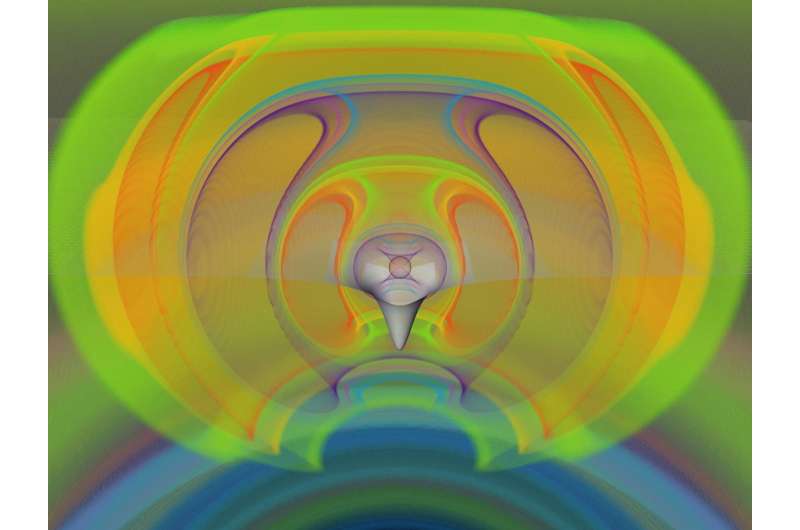How massive can neutron stars be?

Astrophysicists at Goethe University Frankfurt set a new limit for the maximum mass of neutron stars: They cannot exceed 2.16 solar masses.
Since their discovery in the 1960s, scientists have sought to answer an important question: How massive can neutron stars actually become? By contrast to black holes, these stars cannot gain in mass arbitrarily; past a certain limit there is no physical force in nature that can counter their enormous gravitational force. For the first time, astrophysicists at Goethe University Frankfurt have succeeded in calculating a strict upper limit for the maximum mass of neutron stars.
With a radius of about 12 kilometres and a mass that can be twice as large as that of the sun, neutron stars are amongst the densest objects in the universe, producing gravitational fields comparable to those of black holes. Whilst most neutron stars have a mass of around 1.4 times that of the sun, massive examples are also known, such as the pulsar PSR J0348+0432 with 2.01 solar masses.
The density of these stars is enormous, as if the entire Himalayas were compressed into a beer mug. However, there are indications that a neutron star with a maximum mass would collapse to a black hole if even just a single neutron were added.
Together with his students Elias Most and Lukas Weih, Professor Luciano Rezzolla, physicist, senior fellow at the Frankfurt Institute for Advanced Studies (FIAS) and professor of Theoretical Astrophysics at Goethe University Frankfurt, has now solved the problem that had remained unanswered for 40 years: With an accuracy of a few percent, the maximum mass of non-rotating neutron stars cannot exceed 2.16 solar masses.
The basis for this result was the "universal relations" approach developed in Frankfurt a few years ago [www.goethe-university-frankfurt.de/60913695/15]. The existence of "universal relations" implies that practically all neutron stars "look alike," meaning that their properties can be expressed in terms of dimensionless quantities. The researchers combined these "universal relations" with data on gravitational-wave signals and the subsequent electromagnetic radiation (kilonova) obtained during the observation last year of two merging neutron stars in the framework of the LIGO experiment. This simplifies calculations tremendously because it makes them independent of the equation of state. This equation is a theoretical model for describing dense matter inside a star that provides information on its composition at various depths in the star. Such a universal relation therefore played an essential role in defining the new maximum mass.
The result is a good example of the interaction between theoretical and experimental research. "The beauty of theoretical research is that it can make predictions. Theory, however, desperately needs experiments to narrow down some of its uncertainties," says Professor Rezzolla. "It's therefore quite remarkable that the observation of a single binary neutron star merger that occurred millions of light years away combined with the universal relations discovered through our theoretical work have allowed us to solve a riddle that has seen so much speculation in the past."
The research results were published as a Letter of the Astrophysical Journal. Just a few days later, research groups from the USA and Japan confirmed the findings, despite having so far followed different and independent approaches.
Gravitational-wave astronomy is expected to observe more such events in the near future, both in terms of gravitational-wave signals and in the more traditional frequency ranges. This will further reduce uncertainties about maximum mass and lead to a better understanding of matter under extreme conditions. This will be simulated in modern particle accelerators, for example at CERN in Switzerland or the FAIR facility in Germany.
More information: Luciano Rezzolla et al. Using Gravitational-wave Observations and Quasi-universal Relations to Constrain the Maximum Mass of Neutron Stars, The Astrophysical Journal (2018). DOI: 10.3847/2041-8213/aaa401
Journal information: Astrophysical Journal
Provided by Goethe University Frankfurt am Main


















